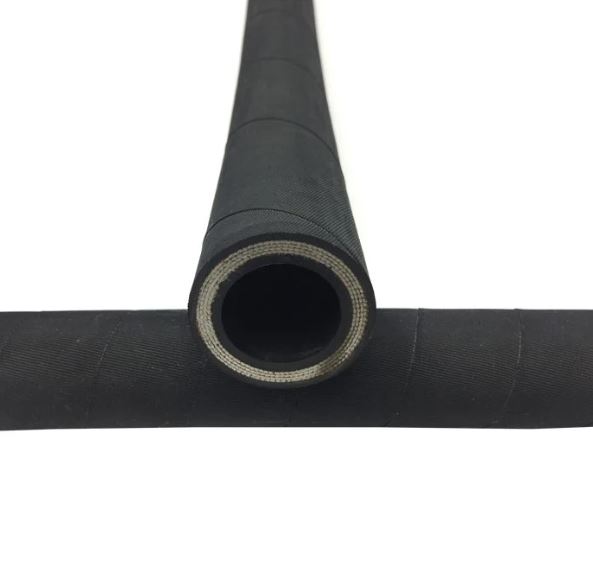Improving Airflow Efficiency with Optimal Vent Hose Selection and Installation Techniques
The Importance of Vent Hoses in Automotive Systems
In the realm of automotive engineering, the intricacies of vehicle design are impressive, particularly when it comes to managing the various fluids that keep a vehicle running smoothly. One often overlooked but vital component is the vent hose. Despite its seemingly simple function, the vent hose plays a critical role in maintaining the efficiency, safety, and longevity of a vehicle.
What is a Vent Hose?
A vent hose, sometimes known as a breather hose, is a tubular component that allows air to flow in and out of a closed system. In automotive applications, these hoses are commonly found in the fuel system, crankcase ventilation system, and cooling system. Their primary purpose is to regulate pressure and facilitate the combustion process while preventing the buildup of harmful gases, which can compromise engine performance and safety.
The Role of Vent Hoses in the Fuel System
One of the primary applications of vent hoses is within the fuel system of a vehicle. During combustion, fuel vapors can accumulate within the fuel tank, leading to increased pressure. If this pressure is not properly vented, it can cause the tank to swell or even rupture in extreme cases. Vent hoses work to prevent such occurrences by allowing vapors to escape safely.
Moreover, modern vehicles are equipped with evaporative emission control systems (EVAP) that capture fuel vapors and direct them back to the engine for efficient combustion. The vent hose is crucial in this system, ensuring that the pressure is balanced and that fuel vapors are managed effectively. This not only improves fuel efficiency but also reduces harmful emissions, making it an essential component in meeting environmental regulations.
Crankcase Ventilation and Engine Breathing
Another significant area where vent hoses are employed is in the crankcase ventilation system. As an engine operates, gases can build up in the crankcase due to the combustion process. If these gases are not vented properly, they can lead to increased pressure, causing oil leaks or even engine damage.
vent hose

The vent hose facilitates the movement of these gases from the crankcase back into the engine intake, where they can be burned during the combustion cycle. This process not only helps maintain appropriate pressure within the crankcase but also reduces overall emissions by reintroducing these gases into the fuel system.
Impact on Cooling Systems
Vent hoses are also important in the engine cooling system. They allow air to escape from the cooling system as it becomes pressurized when the engine heats up. Proper ventilation prevents pressure buildup that can lead to coolant leaks or even failure of components such as the radiator. By venting excess air and preventing vapor lock, vent hoses help ensure that the cooling system operates efficiently and that the engine remains at a safe operating temperature.
Maintenance and Best Practices
Given their critical role in automotive systems, it is essential to maintain vent hoses to ensure optimal performance. Regular inspections for cracks, blockages, or leaks should be part of routine vehicle maintenance. A compromised vent hose can lead to a host of issues, including poor engine performance, decreased fuel efficiency, and increased emissions.
When replacing vent hoses, it is crucial to use high-quality materials that can withstand the harsh automotive environment. Silicone hoses, for example, tend to be more durable and resistant to the wear and tear caused by heat and chemical exposure compared to rubber hoses.
Conclusion
In summary, vent hoses may seem like minor components within a vehicle, but their impact on overall automotive performance is anything but negligible. From managing fuel vapors to regulating crankcase pressure and supporting the cooling system, vent hoses are indispensable for ensuring efficient and safe vehicle operation. By prioritizing the maintenance of these components, vehicle owners can enhance their vehicles’ performance and longevity while contributing to a cleaner environment. As automotive technology continues to evolve, the importance of such seemingly simple elements will undoubtedly persist, reminding us that every detail matters in the complex design of modern vehicles.
-
Top Quality Oxy Acetylene Hoses for Sale Fit for Welding DemandsNewsJul.28,2025
-
The Future of Pneumatic Air Tubes in IndustryNewsJul.28,2025
-
Superior and Reliable LPG Hose Pipe Solutions for Every NeedNewsJul.28,2025
-
Exceptionally Durable and Versatile Premium Braided PVC TubingNewsJul.28,2025
-
Best Adapters for Connecting Garden Hose to PVC Pipe ConnectionsNewsJul.28,2025
-
The Essential Role of LPG Hoses in Safe and Efficient Gas DistributionNewsJul.16,2025














